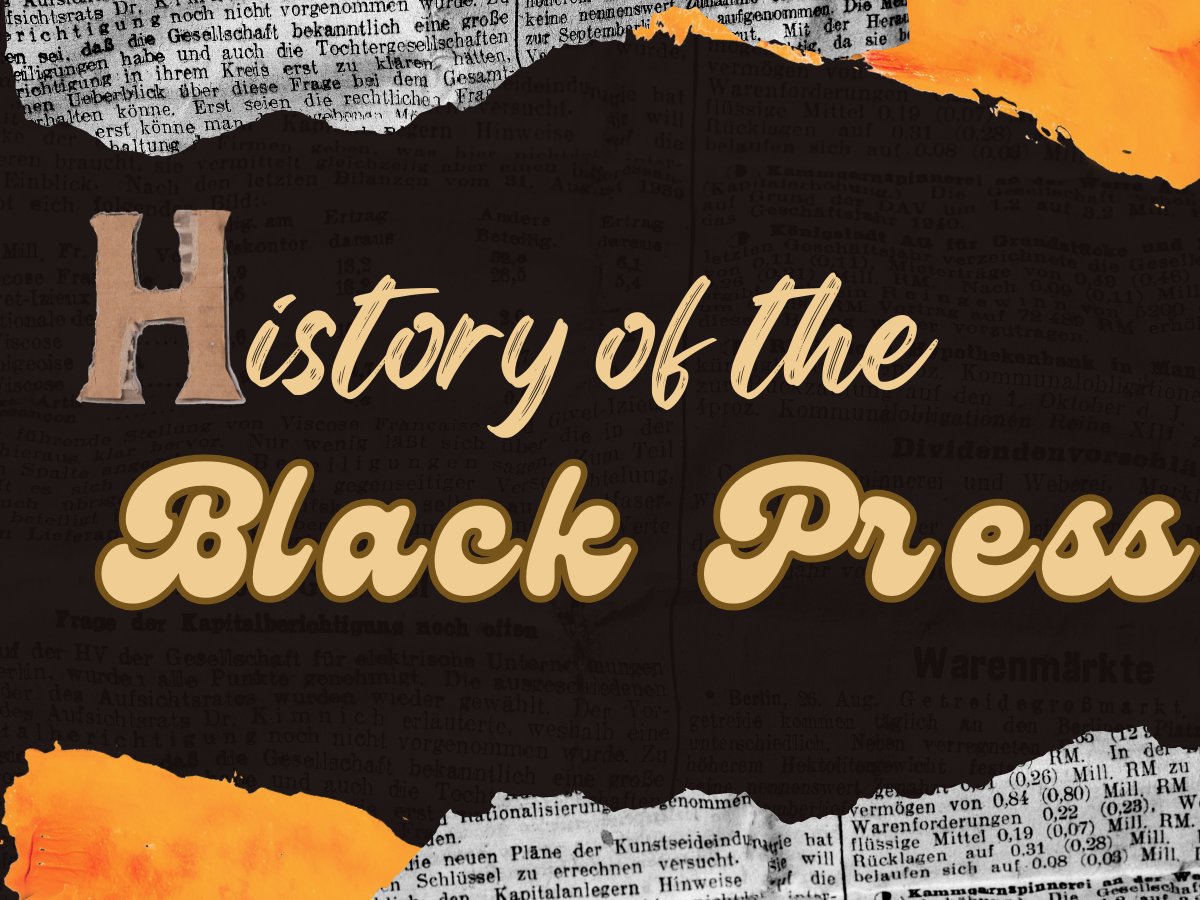The Black Press gave a voice to the African American community and with its history came its legacy. Graphic by Anabelle Coker | THE ALL STATE
The white perspective has largely dominated journalism and the propagation of information in the mainstream media. Even after the abolition of slavery, Black voices were frequently ignored and the Black experience was left to oblivion. Despite this clear suppression of marginalized voices, the Black press has grown to thrive. But how did it manage to achieve such wild success?
The Black Press was founded in 1827, the same year slavery was outlawed in New York, with the establishment of Freedom’s Journal in the famous New York City. Together, Samuel Cornish and John B. Russwurm would become editors for the weekly paper. This paper allowed them, and other Black Americans, to begin speaking for themselves.
Freedom’s Journal allowed people who were previously left unrepresented in American media to have an outlet. For about two years the paper would function like the average newspaper—with the bonus of anti-slavery advocacy and promotion of Black success. While the paper itself was shortlived, the legacy it left behind would allow the Black Press to rapidly expand.
Founded in 1905, The Chicago Defender would become one of the most influential newspapers in the nation, especially amongst Black readers. Its founder Robert S. Abbott would spend almost five years running the paper alone before it finally began to expand, but by World War I the Defender would be the most influential Black-owned paper.
This paper would also contribute to the Great Migration, encouraging Black people to move northward for a better life. It is recognized as the first Black newspaper to have a circulation of over 100,000 and utilized similar sensationalization tactics as the dominant white newspapers at the time. Today, it continues as an online publication.
Another highly influential Black newspaper of the 20th century was the Pittsburgh Courier, originally known as A Toiler’s Life. It was founded by Edwin Harleston in 1907 and rose to fame as the Courier in 1910 after Robert Lee Vann took over operations.
This paper would grow alongside others like the Defender to become some of the most widely read Black newspapers in the United States. At its height, it boasted a circulation of almost 200,000.
Under Ira Lewis from 1942 to 1943, the Courier would lead the promotion of the Double Victory campaign. The first victory, victory abroad, represented the Black Americans laying down their lives to fight against fascistic governments in World War II.
Meanwhile, the second victory, victory at home, represented the Black Americans fighting for their deserved civil rights in the United States. The Pittsburgh Courier still exists today as the New Pittsburgh Courier, although it is no longer nearly as popular.
The Black press faced unprecedented hardship in its attempt to cement the Black experience into journalism, but there is no question these efforts were a success.
In part, the founders, contributors and supporters of these revolutionary newspapers would allow for the explosion of the Civil Rights movement in the 1950s and 1960s. The efforts of Black journalists in our nation’s past, present and future remain ever-important in capturing the perspectives of the marginalized.
Resources
The Black Press:
Freedom’s Journal:
Chicago Defender:
National Archives (the Great Migration)
Pittsburgh Courier:
PBSNational WWII Museum (Double Victory)







